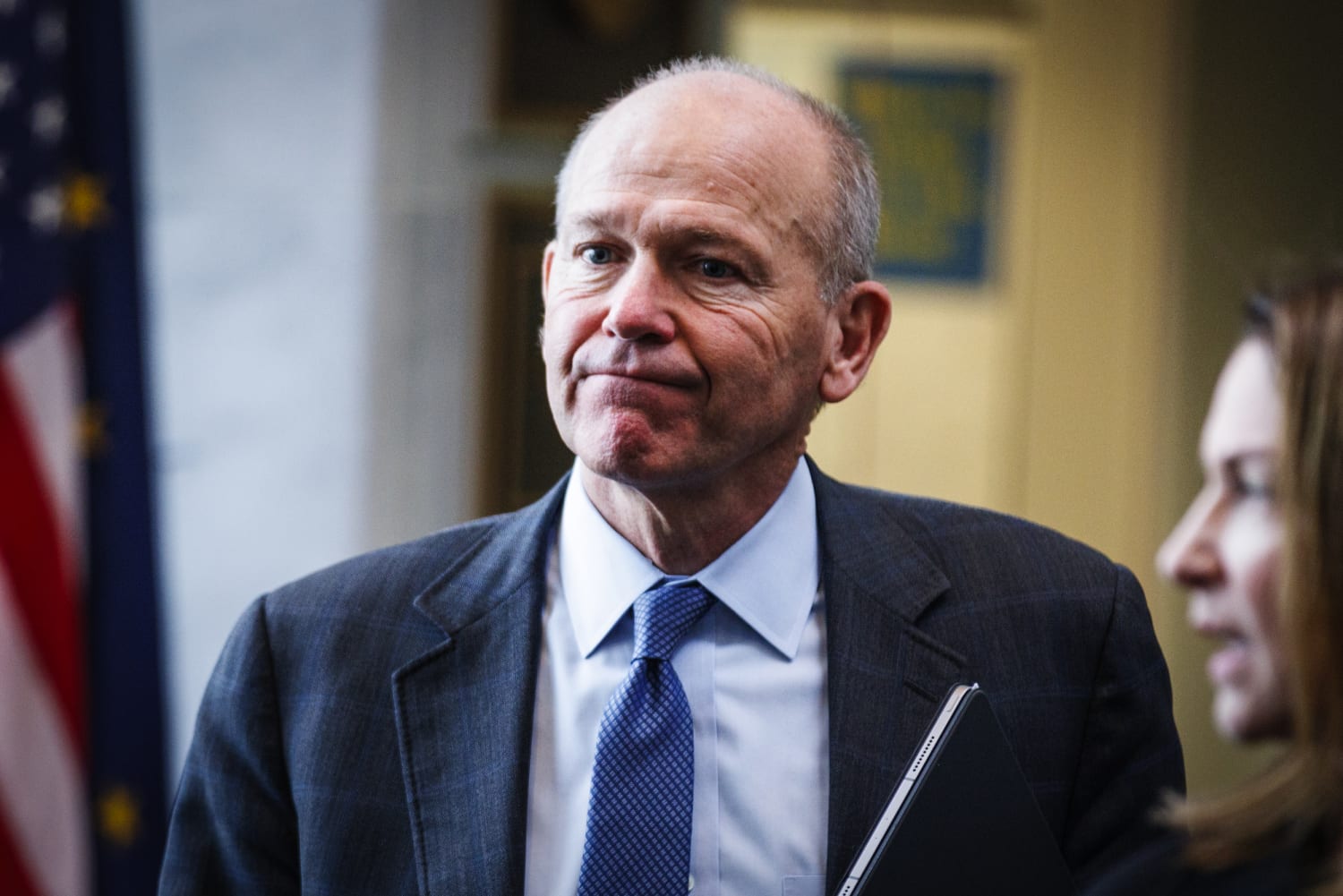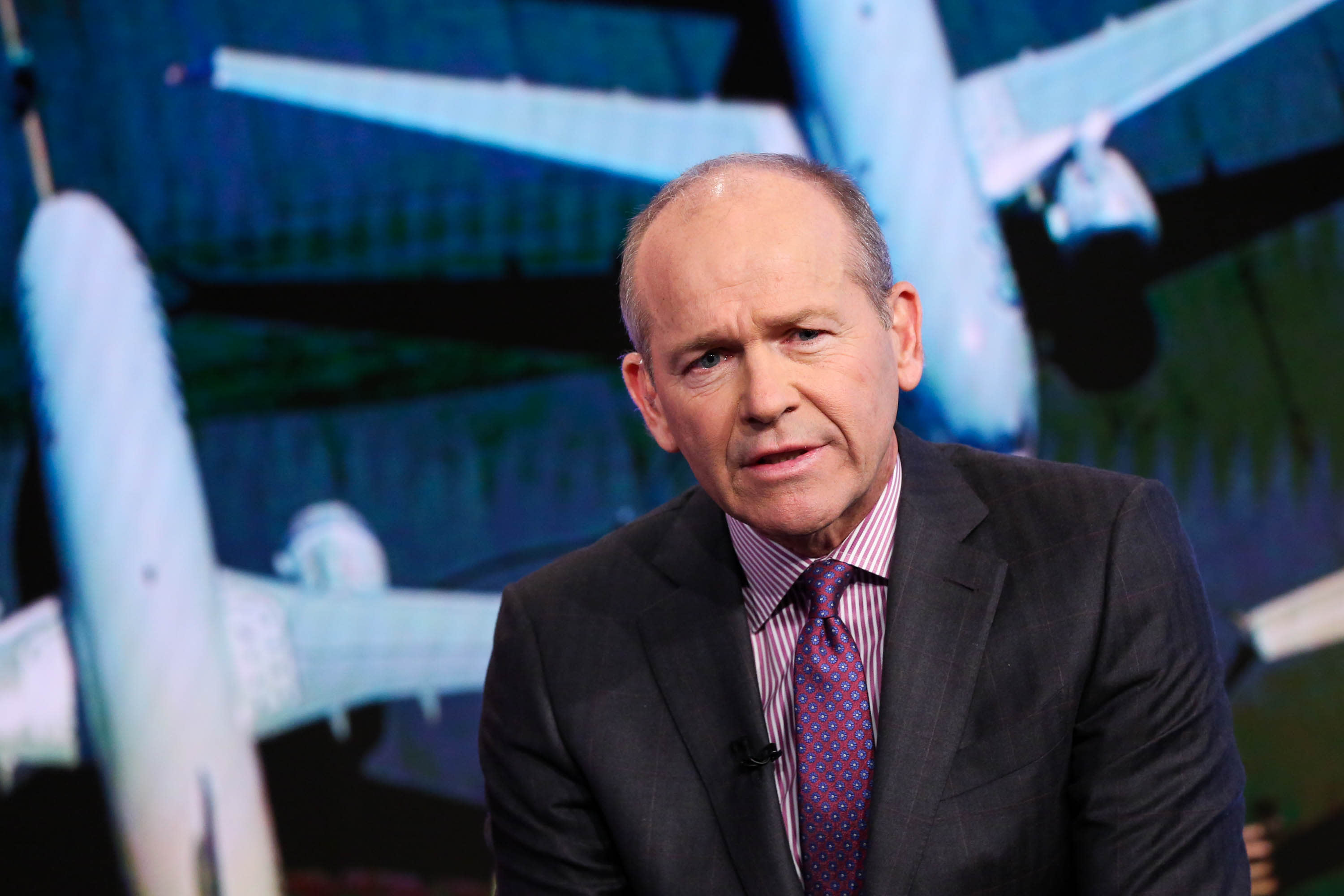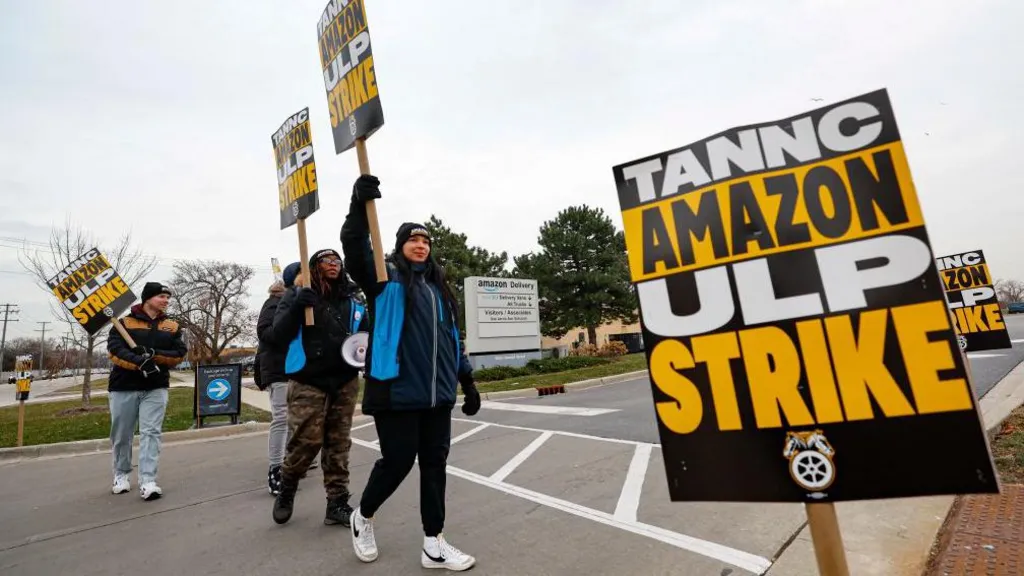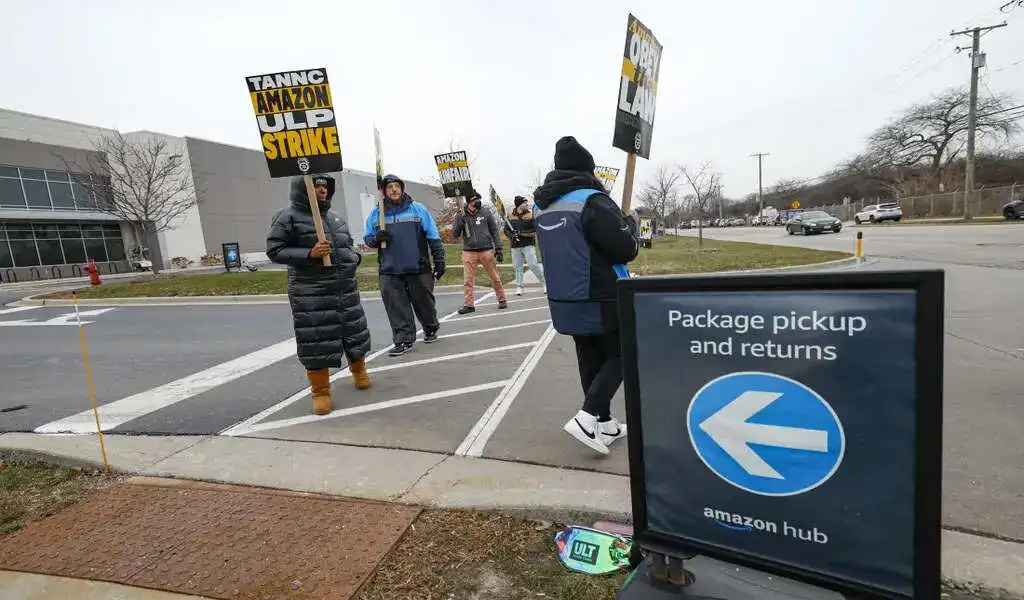Business
Boeing CEO Is Appearing Before A Senate Panel As A New Whistleblower Emerges

U.S. legislators are set to question Boeing’s CEO on Tuesday about the company’s newest plan to address manufacturing issues, and relatives of those killed in two Boeing 737 Max airliner tragedies will be in the room to watch.
CEO David Calhoun is slated to testify before the Senate investigations subcommittee, chaired by Boeing critic Sen. Richard Blumenthal, D-Conn.
Hours before Calhoun was scheduled to appear, the Senate panel issued a 204-page report including additional allegations from a whistleblower who is concerned that “nonconforming” parts — those that may be defective or not properly recorded — are being installed in 737 Max jets.

Boeing | Fox Image
Boeing CEO Is Appearing Before A Senate Panel As A New Whistleblower Emerges
Sam Mohawk, a quality assurance investigator at Boeing’s 737 assembly factory outside Seattle, claims the corporation concealed proof of the condition after the Federal Aviation Administration told it a year ago that it would inspect the facility.
“Once Boeing received such a notice, it ordered the majority of the (nonconfirming) parts that were being stored outside to be moved to another location to intentionally hide improperly stored parts from the FAA,” Mohawk stated in the study. “Approximately 80% of the parts were moved to avoid the watchful eyes of the FAA inspectors.”
Mohawk stated the parts were later returned or lost. They included rudders, wing flaps, and tail fins, all necessary for plane control.
The panel stated that records and whistleblower statements “paint a troubling picture of a company that prioritises manufacturing speed and cost savings over ensuring aircraft quality and safety.”
The hearing will be Calhoun’s first appearance before Congress or any other high-ranking Boeing official since a panel blew out a 737 Max during an Alaska Airlines flight in January. The event did not result in significant injuries but aroused new concerns about the company’s best-selling commercial aircraft.
The National Transportation Safety Board and the Federal Aviation Administration conduct separate investigations.
“From the start, we accepted responsibility and worked transparently with the NTSB and the FAA,” Calhoun stated in prepared statements for the hearing. He defended the company’s safety culture.
“Our culture is far from perfect, but we are taking action and making progress,” Calhoun said during his prepared remarks. “We are taking comprehensive action today to strengthen safety and quality.”
Blumenthal heard this previously when Boeing dealt with fatal Max crashes in Indonesia in 2018 and Ethiopia in 2019.
“Boeing pledged to change its safety processes and culture five years ago. “That promise proved empty, and the American people deserve an explanation,” Blumenthal stated while announcing the hearing. He described Calhoun’s statement as a critical step for Boeing to regain public trust.

Boeing | NBC Image
Boeing CEO Is Appearing Before A Senate Panel As A New Whistleblower Emerges
Calhoun’s presence was also scheduled as the Justice Department considered whether to charge Boeing for violating the settlement terms reached following the tragic crashes.
The firm says it received the message. Boeing says it has reduced production, encouraged employees to raise safety issues, shut down assembly lines daily to allow workers to discuss safety, and appointed a former Navy admiral to conduct a quality review. Late last month, it delivered an improvement plan requested by the FAA.
The barrage of bad news for Boeing continues, however.
Last week, the FAA announced an investigation into how falsely documented titanium parts entered Boeing’s supply chain, and federal inspectors investigated “substantial” damage to a Southwest Airlines 737 Max following an unexpected mid-flight control issue.
Boeing said that it hasn’t received a single request for a new Max—its previous best-selling airliner—in two months.
Blumenthal first requested Calhoun’s appearance before the Senate subcommittee when a Boeing quality engineer whistleblower claimed that production flaws were posing safety hazards on two of Boeing’s largest jets, the 787 Dreamliner and the 777. He stated that the corporation needed to explain why the public should believe in Boeing’s work.
Boeing denied the whistleblower’s assertions, claiming that comprehensive testing and inspections revealed none of the issues the engineer had foreseen.

Boeing | CNBC Image
Boeing CEO Is Appearing Before A Senate Panel As A New Whistleblower Emerges
Calhoun announced in late March that he would retire at the end of the year. The leader of the company’s commercial aeroplanes segment quit on the same day.
Families of those killed in the Boeing Max disaster in Ethiopia intend to attend Tuesday’s hearing on Capitol Hill. They have frequently asked the Justice Department to pursue Boeing.
Zipporah Kuria, whose father was killed in the collision, stated, “We will not rest until justice is served.” She urged the US government to “hold Boeing and its corporate executives criminally responsible for the deaths of 346 people.”
Last month, the Justice Department found that Boeing breached a 2021 settlement that protected the firm from fraud charges for allegedly deceiving regulators who approved the 737 Max. According to a senior department official, Boeing failed to implement steps to detect and prevent future infractions of anti-fraud rules.
Prosecutors have until July 7 to decide what they will do next.
SOURCE – (AP)
Business
Sonic the Hedgehog Dominates Christmas Wish Lists

Sonic the Hedgehog is dominating Christmas wish lists this year. The lovable blue hedgehog is back in the spotlight, from sonic the hedgehog toys and games to sonic the hedgehog coloring pages and movie hype.
Sonic-themed holiday merchandise is on fire, from quirky sweaters to action figures flying off shelves. Sonic the Hedgehog Christmas outfits for kids are selling out fast, making them a go-to gift option for festive fun.
Retailers have been quick to recognize Sonic’s holiday appeal. Special promotions and exclusive items, like the Sonic holiday t-shirts, are everywhere.
Everyone’s stocking up on Sonic merchandise, from big-box stores to boutique retailers.
Online shopping platforms are seeing a surge in searches for Sonic items. Whether it’s Sonic Christmas-themed tops or Sonic the Hedgehog coloring pages, Sonic the Hedgehog toys or Sonic and the Hedgehog 3, the demand is skyrocketing.
Retailers who tap into this trend are sure to see strong holiday sales.
Sonic has been around since the early 90s, but his popularity never wanes. With the release of Sonic 3, fans are more excited than ever.
Sonic the Hedgehog 4
Meanwhile, Paramount Pictures is preparing “Sonic the Hedgehog 4,” with the newest addition in the family-friendly genre set for a spring 2027 release.
The announcement comes as “Sonic 3” opens in theatres on Friday, estimated to gross $55 million to $60 million from 3,800 North American locations.
The sequel is shaping up to be a good holiday season blockbuster for Paramount, which explains the desire in future “Sonic” adventures. On the international front, the film will be released on Christmas Day in 52 markets.
On Rotten Tomatoes, critics gave “Sonic 3” an outstanding 87% fresh score.
The first two films grossed a total of $725.2 million at the global box office and generated over $180 million in global consumer expenditure through home entertainment rentals and digital purchases.
They also inspired a spinoff Paramount+ series, “Knuckles,” which premiered earlier this year.
Related News:
Man Creates Candy Cane Car to Spread Christmas Cheer
Business
Amazon Strike Called By Teamsters Union 10,000 Walkout

An Amazon strike has hit facilities in the United States in an effort by the Teamsters union to pressure the corporation for a labour agreement during a peak shopping season.
The Teamsters union told the Associated Press that Amazon delivery drivers at seven facilities in the United States walked off the job on Thursday after the firm failed to discuss a labour contract.
According to the union, Amazon employees in Teamsters union jackets were protesting at “hundreds” of additional Amazon facilities, which the union billed as the “largest strike” in US history involving the company.
The corporation, which employs over 800,000 people in its US delivery network, stated that its services will be unaffected.
It was unclear how many people, including members of Germany’s United Services Union, participated in Thursday’s demonstration. The Teamsters union reported that thousands of Amazon employees were implicated in the United States.
Amazon Strike at 10 Locations
Overall, the group claims to represent “nearly 10,000” Amazon strikers, having signed up thousands of people at roughly ten locations across the country, many of whom have joined in recent months.
The organization has claimed recognition from Amazon going on strike, claiming the firm illegally neglected its obligation to bargain collectively over salary and working conditions.
The Teamsters is a long-standing US union with nearly one million members. It is well-known for securing lucrative contracts for its members at companies like delivery behemoth UPS.
Most of the Teamsters’ Amazon campaigns have concerned drivers working for third-party delivery companies that partner with the tech behemoth.
Amazon denies that it is liable as an employer in those circumstances, which is a point of legal contention. In at least one case, labour officials have taken a preliminary stance in favour of the union.
Stalled Contract Negotiations
Amazon employees at a major warehouse on Staten Island in New York have also chosen to join the Teamsters. Their warehouse is the only Amazon facility in the United States where labour officials have formally recognized a union win.
However, the Amazon strike is because contract negotiations have not progressed since the 2022 vote. It was not one of the areas scheduled to go on strike on Thursday.
Amazon, one of the largest employers in the United States, has long received criticism for its working conditions and has been the target of activists seeking to gain traction among its employees.
Related News:
Amazon Releases Nova, a Fresh Set of Multimodal AI Models.
Business
Amazon Encounters Numerous Strikes As Unions Aim At The Holiday Shopping Surge.

(VOR News) – Thousands of Amazon employees at various sites across the country were scheduled to go on strike on Thursday in an effort by the Teamsters union to pressure the retail behemoth to acknowledge its unionised workers in the United States.
The walkout is expected to concentrate on seven Amazon locations across the country during the holiday purchasing surge and may be the most significant union action against Amazon in the nation’s history.
The business announced on Thursday morning that there had been no effect on operations. It also stated that it is “continuing to concentrate on fulfilling customers’ holiday orders.”
The International Brotherhood of Teamsters maintains that it represents more than 10,000 Amazon employees and contractors in aviation centres, warehouses, and delivery centres.
Amazon has refused to acknowledge the union for many years.
The retail giant, which employs approximately 1.5 million individuals, excludes contractors and part-timers. A strike has been initiated by delivery couriers and warehouse employees at seven distinct locations in order to exert pressure on the company to negotiate a collective bargaining agreement that would encompass modifications to compensation, amenities, and working conditions.
Picketing was intended for New York, Atlanta, Los Angeles, San Francisco, and Skokie, Illinois.
Also, the Teamsters assert that they are establishing picket lines at “hundreds” of additional warehouses and delivery centres by encouraging non-unionized workers to picket under U.S. labour law, which protects workers’ ability to take collective action to further their interests.
“Amazon workers are exercising their power,” Randy Korgan stated to NPR.
“They now realise there is a pathway to take on a corporate giant like this – and that they hold the power.” Amazon responds by accusing the Teamsters of fabricating information regarding the strikes, asserting that the participants are “entirely” outsiders rather than employees or subcontractors of the corporation.
Amazon spokesperson Kelly Nantel stated that “the reality is that they were unable to secure sufficient support from our employees and partners and have invited external parties to harass and intimidate our team.” For more than a year, the Teamsters have been intentionally misleading the public by claiming to represent “thousands of employees and drivers.” They do not.
The Teamsters did not provide a specific duration for the strike; however, they informed NPR that it would extend beyond one day. Workers would receive $1,000 per week in strike money, as per the union.
Teamsters President Sean O’Brien issued a statement in which he stated, “If your package is delayed during the holidays, you can attribute it to Amazon’s insatiable greed.” We established a firm deadline for Amazon to attend the meeting and treat our members equitably. They disregarded it.
The Teamsters granted until December 15 to convene with its unionised employees and develop a collective bargaining agreement.
Amazon has opposed all unionisation efforts in court, asserting that unions were not advantageous to its employees and emphasising the compensation and benefits that the organisation currently provides.
Amazon has been accused of discriminatory labour practices on numerous occasions, including the termination of labour organisers. Furthermore, it has disputed its official status as a contract employer.
Teamsters organize Amazon delivery couriers and other employees.
In June, Amazon established its first unionised warehouse in Staten Island, New York, two years after making history by voting to join the fledgling Amazon Labour Union, which is also affiliated with the Teamsters.
The union is one of the most influential in the United States and Canada, with 1.3 million members. On Thursday, the German United Services Union declared that Amazon employees in Germany would participate in a strike in conjunction with their American counterparts.
In the past, Amazon has experienced demonstrations in Germany and Spain that were related to the holiday season in order to advocate for improved wages and working conditions.
“The holiday season has arrived.” Delivery is anticipated. Patricia Campos-Medina, the executive director of Cornell University’s Worker Institute, asserts that “this is the moment in which workers have control over the supply chain.”
The Teamsters have reported that Amazon’s profits have increased both during and after the pandemic. The corporation is currently valued at over $2.3 trillion, with net income of $15 billion in the most recent quarter alone. It is the second-largest private employer in the United States, following Walmart.
SOURCE: NPR
SEE ALSO:
SoftBank Is Courting Trump With a Proposal To Invest $100 Billion in AI.
TVA News Montreal Becomes Most-Watched News Source in Quebec
-
Politics4 weeks ago
Miller Expects 4.9 Million Foreigners to Leave Canada Voluntarily
-
News3 weeks ago
Nolinor Boeing 737 Crash Lands in Montreal
-
News3 weeks ago
“Shocking Video” Vancouver Police Shoot Armed Suspect 10 Times
-
Tech4 weeks ago
Increasing its Stake in OpenAI by $1.5 Billion is a Possibility for SoftBank.
-
Tech3 weeks ago
Canadian Media Firms Are Suing OpenAI in a Potential Billion-Dollar Dispute.
-
Finance2 weeks ago
Chrystia Freeland Promises Mini-Budget By Dec 16th



























